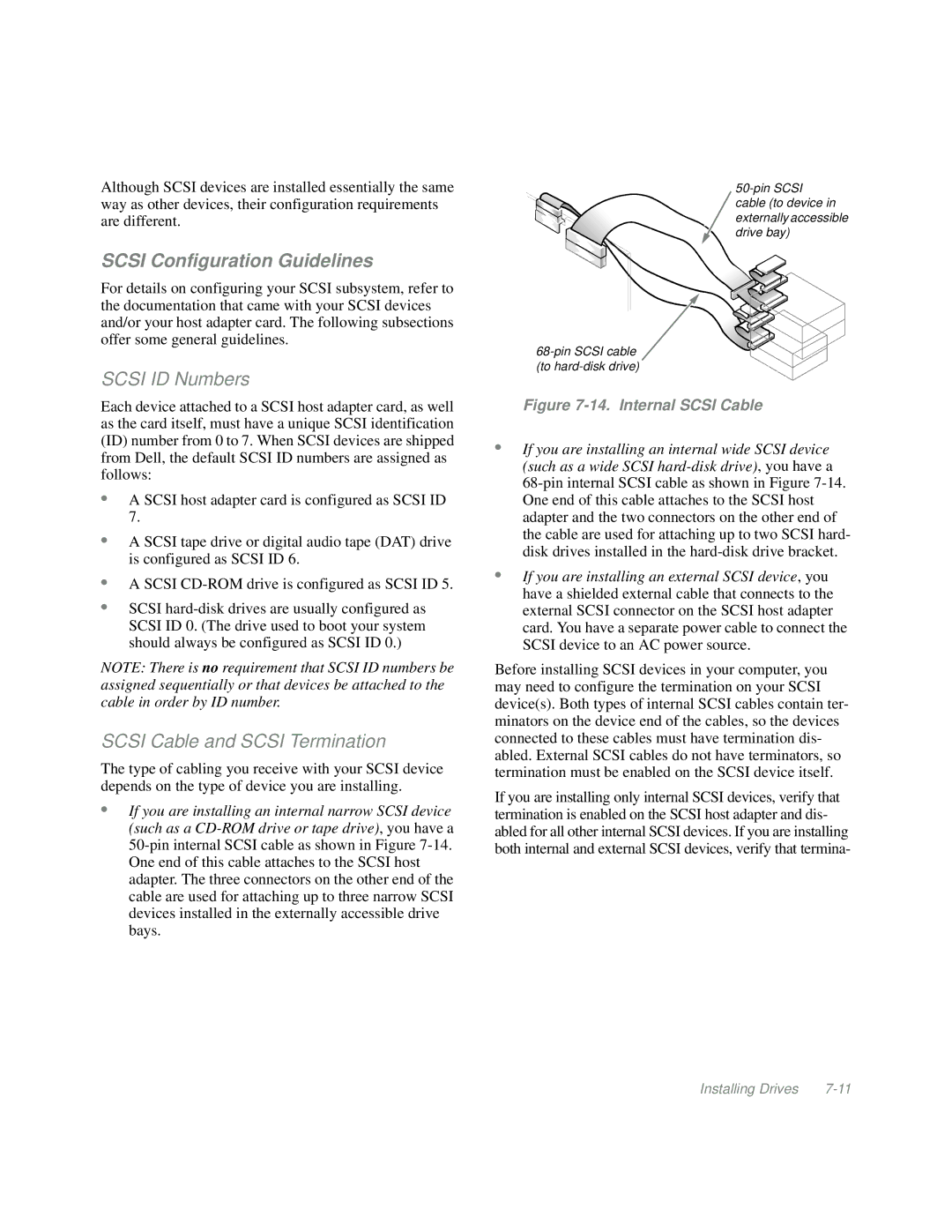
Although SCSI devices are installed essentially the same way as other devices, their configuration requirements are different.
SCSI Configuration Guidelines
For details on configuring your SCSI subsystem, refer to the documentation that came with your SCSI devices and/or your host adapter card. The following subsections offer some general guidelines.
SCSI ID Numbers
Each device attached to a SCSI host adapter card, as well as the card itself, must have a unique SCSI identification (ID) number from 0 to 7. When SCSI devices are shipped from Dell, the default SCSI ID numbers are assigned as follows:
•A SCSI host adapter card is configured as SCSI ID 7.
•A SCSI tape drive or digital audio tape (DAT) drive is configured as SCSI ID 6.
•A SCSI
•SCSI
NOTE: There is no requirement that SCSI ID numbers be assigned sequentially or that devices be attached to the cable in order by ID number.
SCSI Cable and SCSI Termination
The type of cabling you receive with your SCSI device depends on the type of device you are installing.
•If you are installing an internal narrow SCSI device (such as a
Figure 7-14. Internal SCSI Cable
•If you are installing an internal wide SCSI device (such as a wide SCSI
•If you are installing an external SCSI device, you have a shielded external cable that connects to the external SCSI connector on the SCSI host adapter card. You have a separate power cable to connect the SCSI device to an AC power source.
Before installing SCSI devices in your computer, you may need to configure the termination on your SCSI device(s). Both types of internal SCSI cables contain ter- minators on the device end of the cables, so the devices connected to these cables must have termination dis- abled. External SCSI cables do not have terminators, so termination must be enabled on the SCSI device itself.
If you are installing only internal SCSI devices, verify that termination is enabled on the SCSI host adapter and dis- abled for all other internal SCSI devices. If you are installing both internal and external SCSI devices, verify that termina-
Installing Drives |
